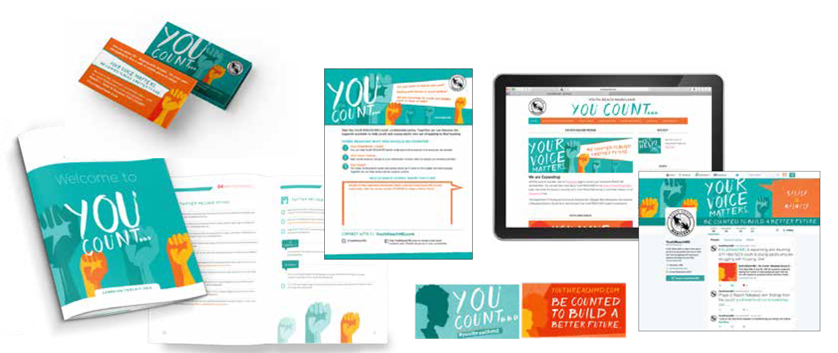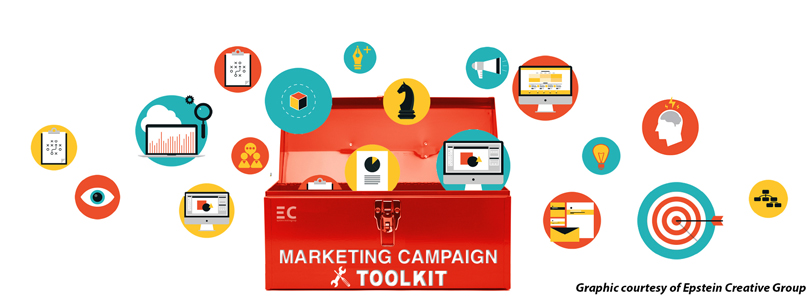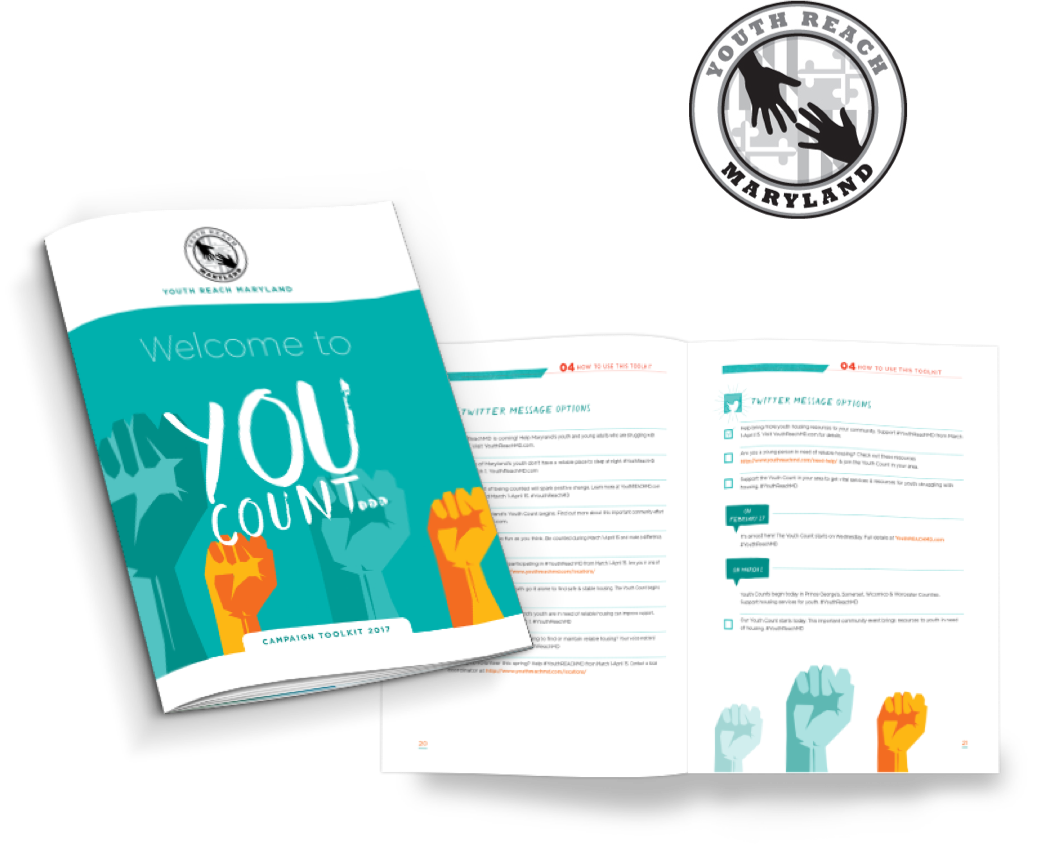Are you tasked with organizing and implementing an awareness, fundraising, or other campaign? Whatever the campaign type, a marketing toolkit is particularly helpful when trying to organize a group of campaign ambassadors (think volunteers, local chapters, students, etc.). A marketing toolkit provides your potential partners with the information, resources, activities, and messaging to make your campaign a success.
Crowe Communications had the honor of partnering with Epstein Creative Group to work with The Institute for Innovation & Implementation, University of Maryland School of Social Work on its 2017 and 2018 Youth Reach campaign. In 2017, we introduced them to the concept of a marketing toolkit and it helped increase their success of the count, and—in early 2018—we were delighted to work with them again to implement several enhancements based on feedback from the 2017 campaign and new marketing and content ideas.
I’m excited to share three advantages of using a marketing toolkit, but first—a bit of background on this project.
Project Background:
Working toward the goal of ending homelessness among Maryland’s youth and young adults, Youth REACH MD sponsors a Youth Count that helps obtain accurate, detailed information on the number, characteristics, and unique needs of the thousands of independent youth and young adults under age 25 across Maryland who are struggling to find and maintain reliable housing.
Crowe Communications was hired as the content strategist for this project (2017 & 2018) and worked collaboratively with Epstein Creative Group to develop an integrated marketing campaign for The Institute for Innovation & Implementation, University of Maryland School of Social Work—the coordinating entity and project manager for Youth REACH MD—to help promote and support the Youth Count surveys. Survey data is used to improve existing services and resources available to support Maryland’s youth and young adults and identify new ways to end youth homelessness.
The Youth Count was held March 1-April 15, 2017. Seventeen of Maryland’s 24 counties participated by selecting their own two-week timeframe within the overall count dates. The Youth Count consisted of online and in-person surveys of youth and young adults who are under age 25, on their own (independent of parents or guardians) and struggling to find safe and reliable housing. In order to make the Youth Count a success, it was important to promote the count in each community and increase the number of surveys received.
This year’s Youth Count campaign expanded to 20 of Maryland’s 24 counties and ran from March 3 to April 15. Similar to 2017, each region selected a two-week timeframe to hold its community Youth Count. We incorporated more locations, improved messaging, and added a comprehensive list of local radio and television stations to help promote the count.

Now that you understand the background of the initial project, here are three advantages a marketing toolkit can offer your organization:
Advantage #1: Organize Your Campaign and Streamline Your Marketing Efforts
As we began working with Youth REACH MD, we took the time to understand their current stakeholders and goals. This allowed us to properly organize the overall campaign and determine the information, content, tools, and resources each region needed to be successful. This was a vital part of the process as each community had different marketing resources, community partners, and volunteers. We even identified a new stakeholder group for them to target!
Advantage #2: Empower Brand Ambassadors
Youth REACH MD takes a broad approach when defining its “community partners.” It relies primarily on the Continuums of Care (CoCs) that are located in each county to spearhead the local planning and implementation efforts. Other effective partners included a range of service providers—from more traditional community shelters and social services (which may be co-located with the CoC) to local locations where youth may gather, such as libraries and recreational centers. Additionally, each CoC recruits youth ambassadors—volunteers who often have experienced housing instability themselves—who help plan Youth Count events and help administer surveys.
With all these different individuals and groups supporting the Youth Count, it was imperative to have consistent messaging and visuals, so the campaign appeared integrated (see Advantage #3 below). It was important to empower these ambassadors with the right tools to make it easy to promote the Youth Count.
Advantage #3: Standardize Messaging and Graphics Across Stakeholders
This toolkit provided the items needed to support each community partner in its efforts to promote the Youth Count. Consistency in messaging and graphics is key to building awareness and momentum for any campaign, and the on-going Youth Reach MD campaign is no exception. The toolkit included sections addressing general talking points, social media posts and graphics, public service announcements and media contacts, marketing collateral, event planning guidelines, and other information to fully prepare the CoCs for promoting the Youth Count in their communities in order to collect the maximum number of surveys. From a content standpoint, three aspects were important—clearly articulating the importance of the count and how to use the toolkit; using language that appealed to younger demographics, especially in social media posts; and using language that was sensitive to young people who experience housing instability (e.g., not referring to them as “homeless”).

The Youth Reach MD marketing toolkit was an essential piece of the marketing and communications plan for the overall campaign. It provided turnkey messaging and graphics that provided a consistent brand—no matter which community partner used it in their local areas.
If a marketing toolkit would benefit your next campaign, or if you need custom content for your marketing activities, contact me today.

